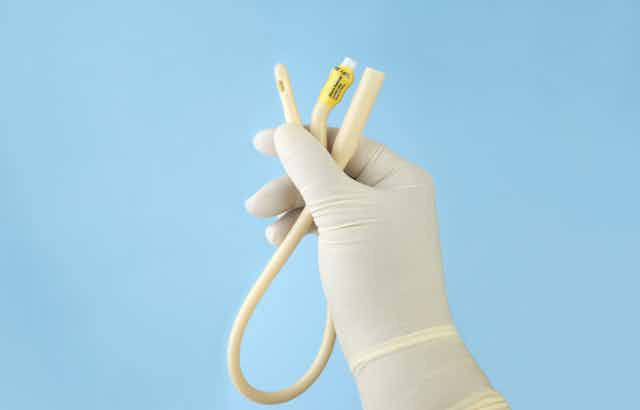Urinary catheters are not exactly the most popular topic of conversation, but their problems affect millions of people. Catheterisation is not just a necessary and uncomfortable process, but for many, it is a daily and dangerous one where progress towards safer, more comfortable catheters has been — dare we say it — painfully slow.
The World Health Organization estimates that more than 200 million people have bladder control problems, with many needing to use urinary catheters. These catheters are drainage tubes that are inserted through the urethra to empty urine from the bladder. They are used after surgery to monitor urine output or on a long-term basis when bladder function can’t be controlled, such as in cases of spinal injury or neurological disorders.
The traditional indwelling, or Foley, catheter remains in place for up to three months and is attached to a collection bag. One in four patients get an indwelling catheter during a hospital stay, often unnecessarily. Use of a catheter is also beset by issues of infection — almost all long-term catheterised patients have bacteriuria (bacteria in the urine) after a month.
These urinary tract infections are the most common infections caught in a hospital. They result in longer hospital stays, increased healthcare costs, overuse of antibiotics, pain for patients and an increased risk of death. Around three-quarters of infections are because of catheter use.

For some people, the alternative intermittent catheters have been transformative. These are inserted just long enough to drain urine and then disposed of each time the bladder needs to be emptied. Intermittent catheters allow users — and we should use the word “user” rather than “patient” here — more dignity and independence to use a conventional toilet, and there’s no need for a collection bag. But regularly using a poorly lubricated catheter is painful and there’s still a risk of infection.
So, for such a big issue, what is being done to develop new ways to make this process more comfortable and less likely to cause a dangerous, expensive-to-treat infection? There has been some progress, particularly in the development of pre-lubricated catheters, which are more comfortable to insert and remove. New compact designs are also more discreet. But more needs to be done.
New catheter coating
To that end, we have published work on a new antimicrobial catheter coating. The coating uses a unique mix of polymers that quickly take up and hold water to give a low-friction surface.
The slippery surface layer should allow inserting and removing the catheter to be less painful and less likely to cause damage to the delicate tissue of the urethra. Simultaneously, the coating also has strong antimicrobial properties to protect the user from harmful microbes that can cause infection and even death. This protection results from both the slippery surface layer, which helps to reduce bacteria sticking to the catheter, and antibacterial agents in the coating. These agents are gradually released from the catheter surface to kill the surrounding bacteria.
So here’s a way of potentially helping people to use catheters so they are less painful and easier to use, while also protecting against infection. The components are also relatively cheap, which should encourage developing the coating for widespread use.
We must, of course, mention the limitations of our work. It is, at this stage, a lab-based study. And the technology will need worked up to prototype devices and tested in users to assess whether it can reduce pain and infection.
But, like it or not, we need to talk about urinary catheters.

